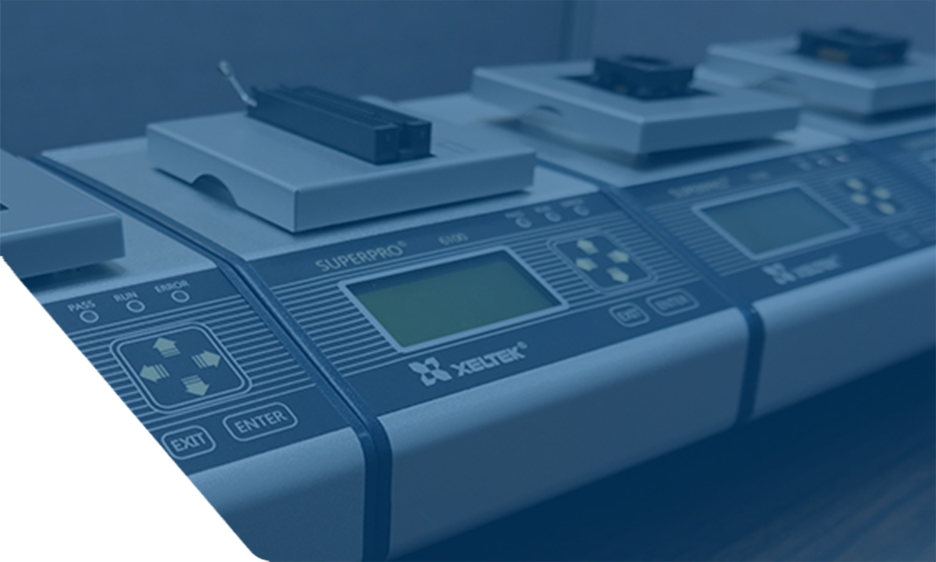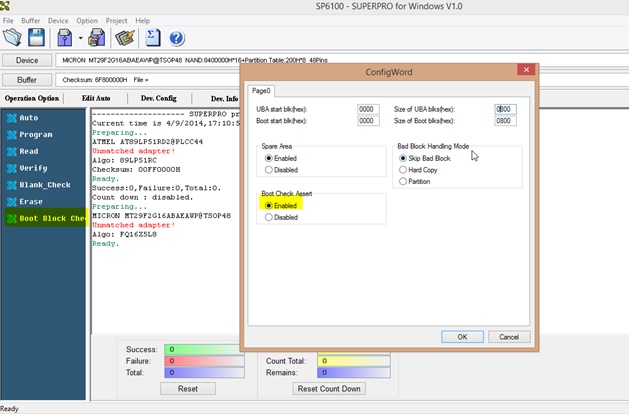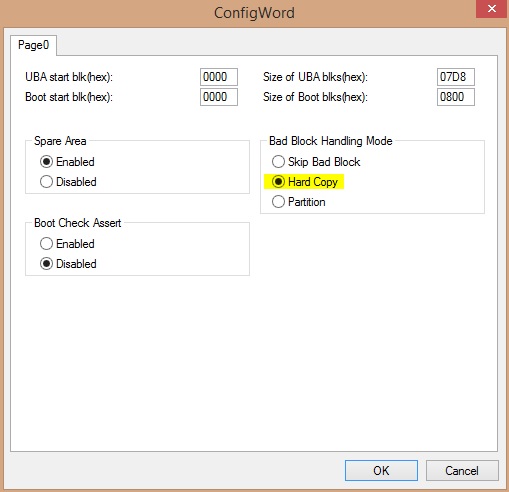
Curabitur placerat magna sollicitudin
Duplicating NAND Chips on SuperPro 6100
NAND Flash Data Recovery / Duplication on SuperPro 6100
Many applications such as data recovery and repair involve reading or duplicating a Master NAND chip to a blank device. The most recommended and preferred programmer for such applications is SuperPro 6100, an ultra-fast 144pin Universal Programmer supporting
helloTitle(); devices. SuperPro 6100 can program high density NAND and eMMC devices up to 256 GB.Duplicating a NAND chip is different than copying any other EEPROM or flash chips because bad blocks exist in NAND flash chips. In order to understand basic NAND flash programming and related terminology, please refer to our NAND flash programming article.
Steps for duplicating a NAND chip from the master chip
1) Reading original device
If the NAND flash has been programmed by a third party programmer, the chip can be read directly without checking for good or bad block. Good or bad block could be checked with “Write over bad blocks/hard copy" in the SuperPro 6100 software Device Configuration setting. This method is used to read all the data from a NAND device to the buffer without considering bad block handling schemes. A master file can be saved in binary format by clicking File à Save for future use.
2) Bad block checking
The success of programming operations can be hindered by bad block(s) occurrence in target devices. Therefore, the target device (blank chip) must be free of bad blocks. Users can also check the number of bad blocks in the device by enabling boot check assert in the config word field. For doing this, fill Boot Start Block with “0000", and Size of Boot blocks with total blocks (800). Click Boot Block Check in the software panel and the number of bad blocks will show.

3) Program and Verify
As the NAND flash has been programmed by a third party programmer, chip-copy operation should be done by hard copy . Make sure that hard copy is selected in config word and run “Program". After programming passes. Run “Verify" to ensure successful programming.
Please note that this method is not recommended for mass production because many target chips will have bad blocks.
Do you have any questions?



















